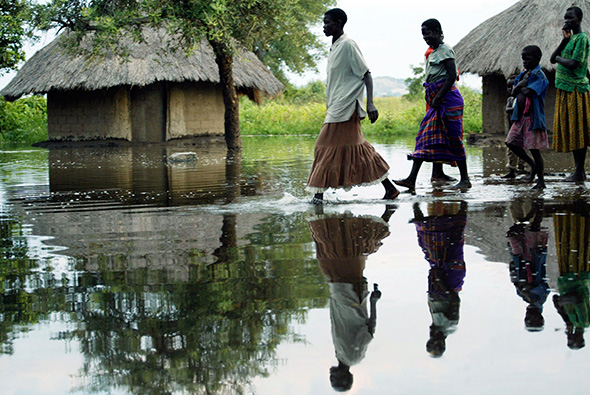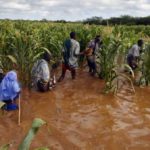
Over the past few years river Nyamwamba in Kasese has persistently burst its banks, causing deaths, displacement of persons and severe damage to property in the affected areas.
And this year several disaster prone areas in east Africa including Kasese district of Uganda are expected to be hit diseases like cholera as a result of flooding caused by El Niño.
According to the July – August report by the United Nations Office for Coordination of Humanitarian Affairs (UNOCHA), the El Nino, which now has the high probability of occurrence of 90 per cent, ill most likely be the worst in 30 years and will hit parts of Tanzania, Kenya, Rwanda, Burundi, Somalia and other parts of Uganda. The UN agency also indicates that the El Niño will affect the food security situation and other attendant social malaises in the East Africa and Horn regions.
In 2002 and 2009 the East Africa and Horn regions experienced El Nino and UNOCHA, quoting FESW NET, says this time the above-normal rains will continue through October 2015 and into 2016.
“Parts of Uganda, Tanzania, Rwanda, Burundi, Somalia and Kenya are expected to experience severe flooding while other parts of the region will experience drought conditions. Prolonged severe flooding may lead to outbreaks of Rift Valley Fever and other tropical water-borne diseases,” the UN release states in part. Already, according to UNOCHA, there are reported cases of cholera especially in the coastal areas of Somalia, Kenya and Tanzania.
“Other notable areas include major counties of Kenya, Kasese District in Uganda, South Sudan internally displaced persons’ sites and the Burundi refugees in Nyarugusi and Kigoma Districts transit centres,” the release states and calls for urgent preparedness in livestock vaccination and, water and sanitation interventions in the flood-prone areas.
“Preparedness measures and early action are required to mitigate the impacts of the drier-than-normal conditions and flooding in affected areas, “ the release states and says other social malaises include infrastructure damage, cutting off access to communities, crop damages in the field and post-harvest losses.






